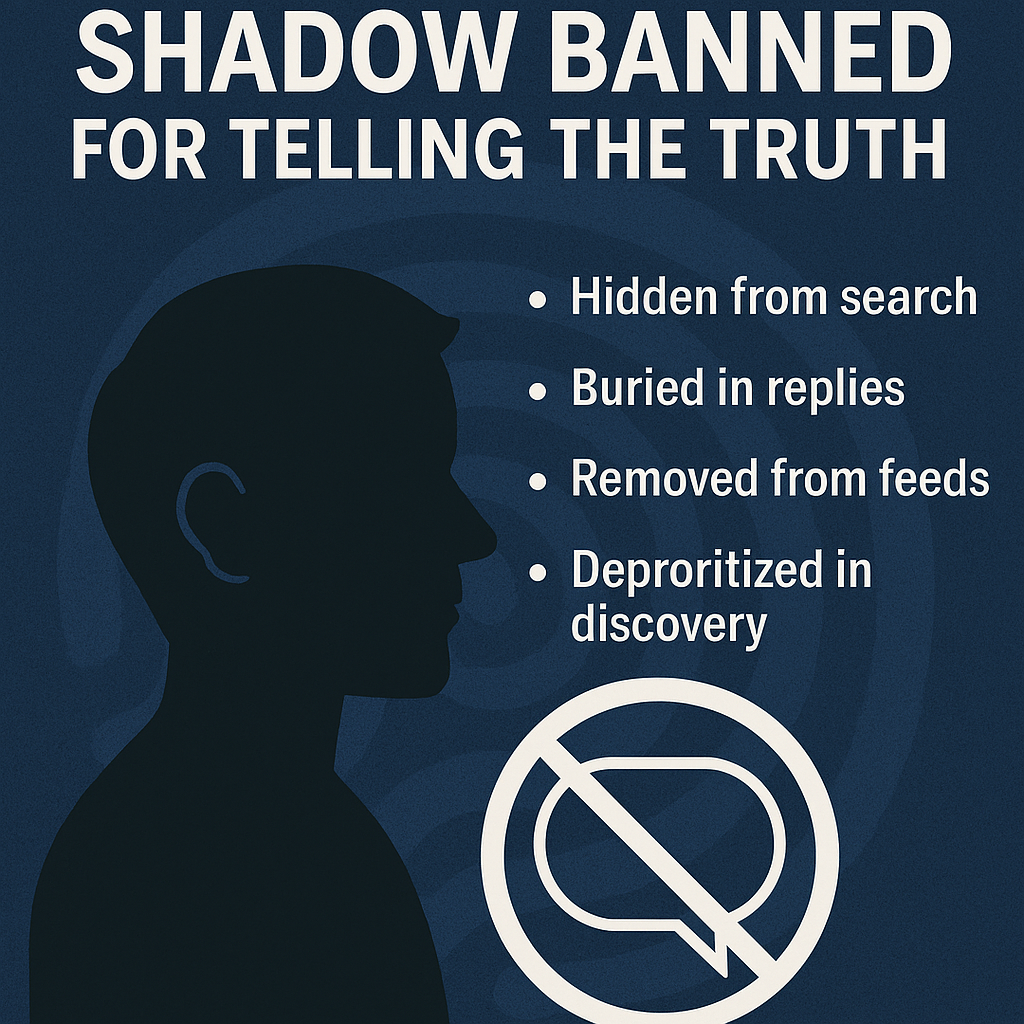By DefamationTracker
You post a calm rebuttal. You cite evidence. You speak the truth. Then — silence. No likes. No replies. No reach. You haven’t been suspended. You haven’t been warned. You’ve been shadow banned.
🧠 What Is Shadow Banning?
Shadow banning is the invisible suppression of a user’s content. The platform doesn’t notify you. Your account looks normal. But behind the scenes, your posts are:
- Hidden from search
- Buried in replies
- Removed from algorithmic feeds
- Deprioritized in discovery
It’s censorship without accountability — and it’s happening more than you think.

👤 Who Gets Shadow Banned?
Not the trolls. Not the spammers. It’s often the users who:
- Rebut false claims with evidence
- Call out platform failures
- Share links to advocacy tools
- Speak calmly but critically
These users aren’t violating rules — they’re violating the platform’s comfort zone.
🧍♂️ A small account with a big truth
One user runs a modest advocacy profile. They post a rebuttal to a false claim with a screenshot and timestamp. It’s respectful, factual, and clean. Within hours, the post vanishes from search. Replies stop showing up. Engagement flatlines. No warning. No violation notice. Just silence.
🧍♀️ A researcher with receipts
Another user shares a link to a blog article about moderation bias. The post gets one like — then nothing. Later, they discover their replies are no longer visible unless someone clicks “Show More.” They’re not being heard. They’re being hidden.
📍 Where Does It Happen?
Shadow banning isn’t limited to one platform. It’s a cross-platform tactic used to suppress visibility without accountability.
- X (formerly Twitter): Replies get buried, search visibility drops
- Instagram: Hashtags stop working, reach plummets
- TikTok: Videos get zero views despite normal posting
- Reddit: Comments are auto-collapsed or hidden from threads
🧍 A creator on TikTok
They post a short video explaining how defamation works online. It gets 500 views in the first hour — then flatlines. The video is still live, but no longer appears in hashtags or recommendations. It’s not deleted. It’s buried.
🕰️ When Does It Happen?
Shadow banning is often triggered by:
- A post that challenges platform narratives
- A rebuttal to a high-volume accuser
- A spike in engagement followed by a sudden drop
- A report filed against your account — even if false
🧍♂️ A commenter with clarity
They reply to a thread about moderation reform. Their comment is thoughtful and rule-abiding. But it’s collapsed by default. Other users report not seeing it at all. They’re still speaking — but the platform turned down the volume.
❓ Why Does It Matter?
Because shadow banning:
- Silences truth-tellers
- Protects false accusers
- Undermines public discourse
- Damages reputations without due process
It’s the digital equivalent of being shouted down in a room — except the room pretends you’re still speaking.
🛠 How DefamationTracker Helps
We’re building tools to:
- Detect visibility suppression
- Archive posts before they vanish
- Document engagement drops
- Rebut false claims with timestamped evidence
We don’t just track defamation — we track the silence that follows.
🧍 A user who fought back
After noticing a sudden drop in engagement, one user used DefamationTracker’s archiving tool to preserve their rebuttal post. They documented the timestamp, engagement history, and visibility status. When they appealed to the platform, they had proof — not just frustration.
📢 Join the Movement
If you’ve been shadow banned, you’re not alone. DefamationTracker is here to expose the suppression, defend reputations, and demand transparency.
DefamationTracker.org Truth Tracked. Visibility Restored.
Views: 1